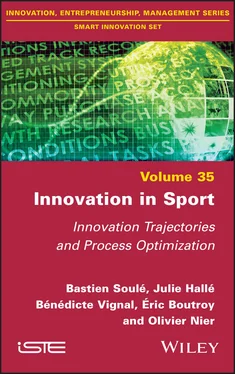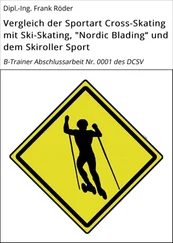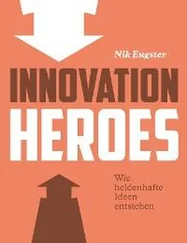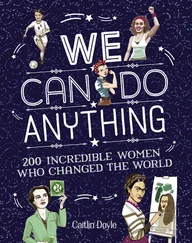1 Cover
2 Title Page Smart Innovation Set coordinated by Dimitri Uzunidis Volume 35
3 Copyright First published 2021 in Great Britain and the United States by ISTE Ltd and John Wiley & Sons, Inc. Apart from any fair dealing for the purposes of research or private study, or criticism or review, as permitted under the Copyright, Designs and Patents Act 1988, this publication may only be reproduced, stored or transmitted, in any form or by any means, with the prior permission in writing of the publishers, or in the case of reprographic reproduction in accordance with the terms and licenses issued by the CLA. Enquiries concerning reproduction outside these terms should be sent to the publishers at the undermentioned address: ISTE Ltd 27-37 St George’s Road London SW19 4EU UK www.iste.co.uk John Wiley & Sons, Inc. 111 River Street Hoboken, NJ 07030 USA www.wiley.com © ISTE Ltd 2021 The rights of Bastien Soulé, Julie Hallé, Bénédicte Vignal, Éric Boutroy and Olivier Nier to be identified as the authors of this work have been asserted by them in accordance with the Copyright, Designs and Patents Act 1988. Library of Congress Control Number: 2021941908 British Library Cataloguing-in-Publication Data A CIP record for this book is available from the British Library ISBN 978-1-78630-655-5
4 Acknowledgements Acknowledgements The authors would like to thank the students of the 2015–2016, 2016–2017 and 2017–2018 classes of the Master’s in Sport Management of the UFR STAPS, Lyon, who helped bring this book to life through their collective work. Madeline Abry, Sofiane Allaoui, Alexandre Alvarez, Samir Assefar, Elsa Aubel, Guillaume Babu, Emilie Bellemin, Etienne Benas, Marine Bernichon, Agathe Beulin, Matthieu Bonnetin, Lucie Brard, Martin Brénot, Jérémie Carrère, Théo Chevallier, Camille Constant, Thomas Danton, Coralie Deloche, Félicien Demure, Adrien Deprez, Bertrand Devaux, Nicolas Duzelier, Lisa Espinasse, Florian Faivre, Alan Gaudefroy, Edouard Guimas, Romain Ginier, Morgane Goupil, Nicolas Gourier, Dylan Grau, Bastien Grundreich, Emna Guiguet, Mathilde Hergott, Thomas Hernu, Romain Hilaire, Tiffany Hourdry, Tiphaine Isnard, Solène Jolicart, Chloé Joubert, Nastasia Kasprzak, Robin Lamache, Baptiste Le Moing, Olivier Léandri, Benjamin Leduc, Clara Legouge, Simon Manéo, Ouafa Mansouri, Daphné Marek, Antoine Martin, Clémence Martin, Aurore Médecin, Robin Miglioli, Manon Moachon, Thibault Moulin, Florie Moyne-Picard, Rouwa Neffeti, Julie Neime, Alice Paillat, Jérémy Paris, Alexis Passion, Daphné Perroud, Thaïs Pibouleau-Vuaillet, Malory Pilorget, Nicolas Pinay, Valentin Pinon, Romain Pinot, Alex Pinto, Fawzi Rahel, Jérémie Rioche, Loïc Rollat, Kevin Ronzon, Nicolas Roubin, Thomas Ruffin, Catherine Salciccia, Yoann Simonet, Charly Slonski, Bastien Teillon, Guillaume Thibault, Adrien Thomas, Valentin Toulemonde, Davy Tracol, Kevin Vannier, Loïc Vetter, Quentin Vouillon and Enzo Zuliani.
5 Introduction
6 1 Theoretical Elements: A Multidisciplinary Framework between Sociology and Management of Innovation 1 Theoretical Elements: A Multidisciplinary Framework between Sociology and Management of Innovation In line with the aim of this handbook, which is to allow a realistic explanation of the innovation processes at work in the field of sport, we shall develop in this theoretical part the main contributions of several approaches from sociology and, to a lesser extent, from socioeconomics and management sciences. The description of these theoretical currents is coupled with another intention: to reflect on how they are structured. In this regard, a clarification is needed now as to the respective projects of management sciences and economics, on the one hand, and of sociology and anthropology, on the other. If not clearly stated, this sometimes leads to misunderstanding, which can make interdisciplinary dialog difficult. Sociologists and anthropologists have essentially focused on understanding the spread of innovations (whether social, cultural, industrial, political, etc.), their adoption in different cultural milieus, which is synonymous with the transformation of practices and uses. Less concerned with cultural dimensions than with organizational and industrial issues, specialists in management science and economics seek to identify (and, to a certain extent, prescribe) the best way to successfully commercialize a novelty, with a singular focus on technological innovation. From then on, the innovative company, its stakes and the expected return in terms of added value are central (Godin 2017). Appropriation on the one hand, commercialization on the other; although this division is often schematic, it is nonetheless rooted in a certain epistemological reality, even if several theoretical approaches propose going beyond it.
1.1. Classical approaches to innovation 1.2. Approaches based on uses and users 1.3. The socio-technical approach to innovation: networks and attachment 1.4. Critical innovation studies 1.5. Lessons learned from resistance to innovation and unsuccessful processes 1.6. Conclusion
7 2 The Different Phases of Innovation Trajectories2.1. Proposal for an interpretive framework 2.2. Breakdown of the methodology 2.3. Ideation and invention 2.4. Relations with users and the market 2.5. Success or failure: assessment of the innovation project and effects on the organizations
8 3 Detailed Accounts of Three Sports Innovation Trajectories 3.1. The dualski: making downhill skiing accessible to people with disabilities 3.2. The Booster Elite calf compression sleeve from BV Sport: innovating to promote recovery and prevent injuries 3.3. Hyperion 7: innovating in the field of video recording sports events 3.4. Appendices 3.5. Sources used
9 Conclusion: Recommendations for the Management of Sports Organizations
10 References
11 Index
12 End User License Agreement
1 Chapter 2 Figure 2.1. Classical fixation model with frame (Diamir Fritschi) 2. For a color ... Figure 2.2. Front attachment in vacuum 3. For a color version of this figure, see... Figure 2.3. Front attachment with shoe 4. For a color version of this figure, see... Figure 2.4.The Swan9. For a color version of this figure, see www.iste.co.uk/so... Figure 2.5. The Hurricane Supermatic10 Figure 2.6. Photograph of the mechanical beater (fork placed horizontally) 11. Fo... Figure 2.7.Diagram of the bottom of the fork with the beater (vertical position... Figure 2.8. Positionable profile clamps 13. For a color version of this figure, s... Figure 2.9.The Ephithelium Flex sports knee brace (photo credit: Epitact Sport ... Figure 2.10. The kitefoil 14. For a color version of this figure, see www.iste.co... Figure 2.11.Sketch of a prototype16. For a color version of this figure, see ww... Figure 2.12. Installation of the heel pad in the wedge of the shoe 17. For a colo... Figure 2.13. Salomon’s swim run shoe 28. For a color version of this figure, see ...
2 Chapter 3 Figure 3.1.Dualski with stabilizers2. For a color version of this figure, see w... Figure 3.2.Piloted Dualski3. For a color version of this figure, see www.iste.c... Figure 3.3.Steel base and frame4. For a color version of this figure, see www.i... Figure 3.4.Extract from the patent for the suspension and lifting mechanism – w... Figure 3.5. Excerpt from the ski chair patent (1993) (Photo credit: INPI)
Читать дальше












